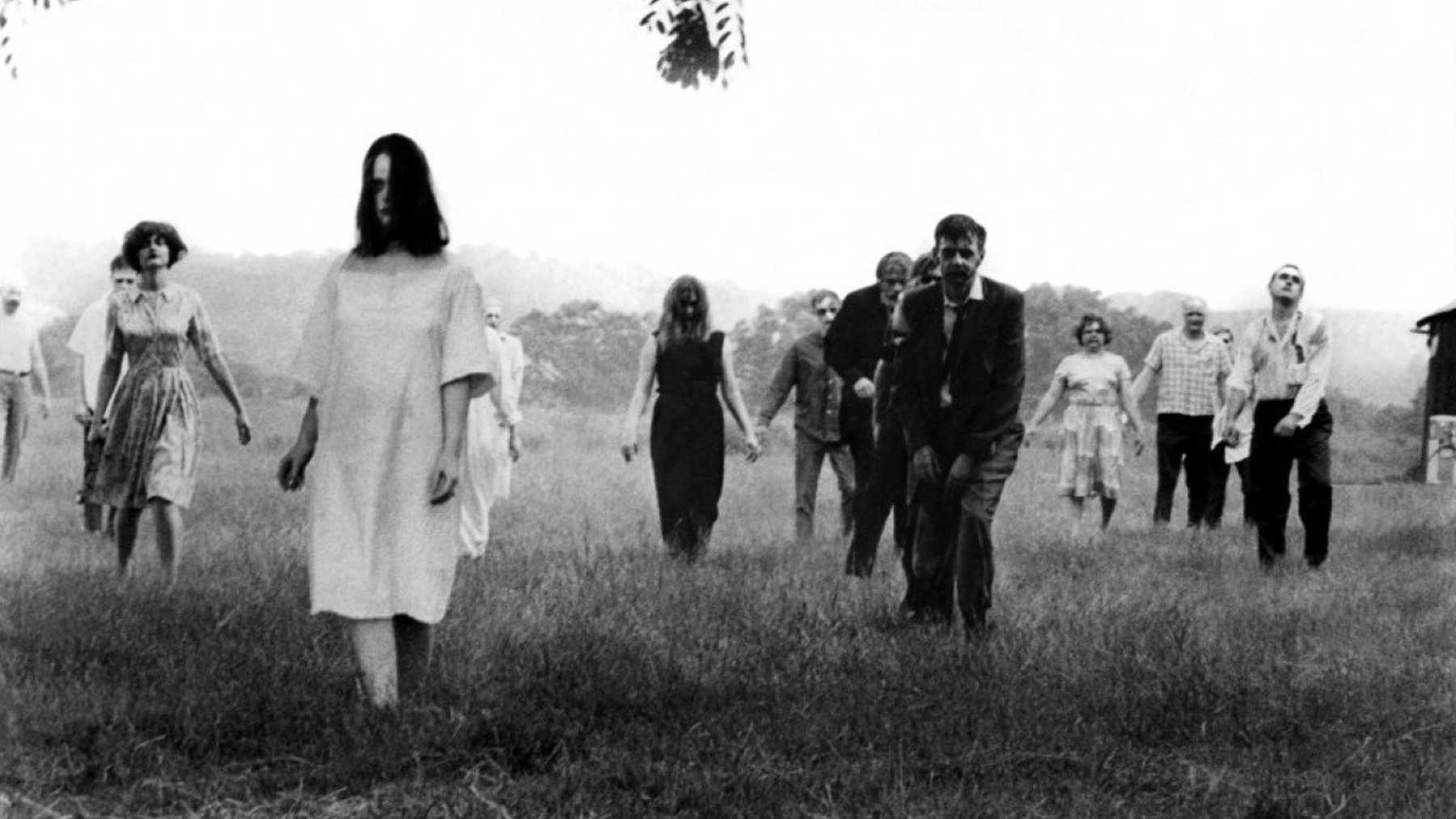
Rosemary’s Baby—released in 1968, the same year as Night of the Living Dead—is what we call a “slow burn,” or “psychological horror,” which is a decidedly different approach to horror than the “theater of attractions” theorized by Gunning about early film experiences, and appropriated by Lowenstein in his consideration of Night of the Living Dead and other Romero films. The film moves with a creeping dread. Watching it for the first time, without any context, you might wonder, up until the very end, if Rosemary is as “crazy” and “paranoid” as the people around her want her to believe. Much of her psychological disturbance comes to us through nightmares, not scenes grounded in reality. The hallmark of psychological horror is such uncertainty. The campier moments in the film only make its horrors more disturbing.
Though the film does have a supernatural “demonic” element, as revealed by its ending scene, the more terrifying element (for me, anyway) is the very human abuse of Rosemary by both Guy, the Castavets, and Dr. Saperstein. The gaslighting, the drugging for the purposes of rape, the coercive control, the betrayals (including the one by Dr. Hill)—all of this psychological, emotional, and sexual abuse generates a feeling of being trapped within the apartment building that is as terrifying, if not more so, as the feeling of being trapped within the abandoned farmhouse in Night of the Living Dead, with literal zombies banging against the windows.
And it’s not just any apartment building—the film is set in The Bramford, one of the fanciest (fictional) apartment buildings in NYC. There is a lot to say about the film’s depiction of the bourgeoise. These are relatively wealthy and privileged people living in New York City, the center of US culture. They play the roles of “upstanding” members of society. Minnie, for example, plays up her “maternalism” to gain Rosemary’s trust. Guy is a clean-cut, “dashing” young actor. But there is poison in the pudding, violence and rape behind closed doors. The beautiful and lavish apartment building, with its old-fashioned charm, becomes a prison, a torture chamber, a Hell. These are the “hidden horrors” that hide easily behind whiteness and wealth.
I’ve always found the exchange between Rosemary and Guy in the bedroom the morning after the ritual rape to be particularly reflective of the domestic abuse dynamic. The coven’s abuse of Rosemary is possible because she has been prepared for it. Rosemary sees the claw marks on her stomach and Guy notices her checking them out:
Guy: Don’t yell. I already filed them down.
I didn’t want to miss baby night. A couple of nails were ragged.
Rosemary: While I was out?
Guy: It was fun, in a necrophile sort of way.
Rosemary: I dreamed someone was…raping me.
I don’t know, someone inhuman.
Guy: Thanks a lot!
What’s the matter?
Rosemary: Nothing.
Guy: I didn’t want to miss the night.
Rosemary: We could’ve done it this morning. Last night wasn’t the only time.
Guy: I was a little bit loaded myself, you know?
There is nothing supernaturally horrific or graphically violent about this scene, yet it is still quite terrifying. Guy is telling Rosemary that he raped her in her sleep because he was too drunk; this is his “cover” lie for what really happened. She is perturbed, but simply moves on. There is something deeply disturbing about this relationship dynamic, but you’d only know it if you were eavesdropping.
The US was on the cusp of great sociopolitical change in 1968. WWII and the Holocaust were still in the recent past, and their traumatic effects still very visible. The civil rights and feminist movements were gaining traction, threatening status quos and, in the latter case, the traditional family unit and a woman’s role in the home. Horror never exists in a vacuum. Your reading for this week from A Companion to the Horror Film discusses both Night of the Living Dead and Rosemary’s Baby within their sociohistorical contexts, exploring some ways that they operate broadly as social allegories. Your two scholarly articles by McElhaney and Fischer focus their analyses on more specific elements of the film; the former explores its use of urban space, while the latter considers its image of pregnancy.
A note on Roman Polanski: Polanski himself was later found guilty of drugging and raping a teenage girl; he fled to evade punishment and avoids countries that would extradite him to the US. I mention this because some of you may already know his history and be tempted to read the film through the lens of this knowledge, to focus all of your analysis on him alone. Unsurprisingly, there are misogynistic elements of this film, but I’d encourage you to discuss them within their sociocultural contexts, rather than only as products of their director’s mind. The film is a complex one, a significant cultural artifact of its place and time, and an important moment in horror filmmaking (as Fischer calls it: “a movie that heralds both the birth of horror and the horror of birth in the modern cinema”).
When posting to Slack, please use at least one of the critical sources assigned for the week in your analysis. You will be asked to use these sources in your papers, and the response posts are a good place to practice conversing with and integrating these sources into your own thoughts. You will also be asked to compare films in some essay questions, and our first two films are a good place to start doing so. Because Night of the Living Dead and Rosemary’s Baby were released in the same year, consider comparing and contrasting their approaches to horror in your responses. Consider, for example, that we never see the baby and its eyes, even at the end, when we finally receive confirmation that Rosemary is not imagining things. Instead, we only see Rosemary’s gentle, feminine smile. This is a very different ending than a gunshot to the head.

